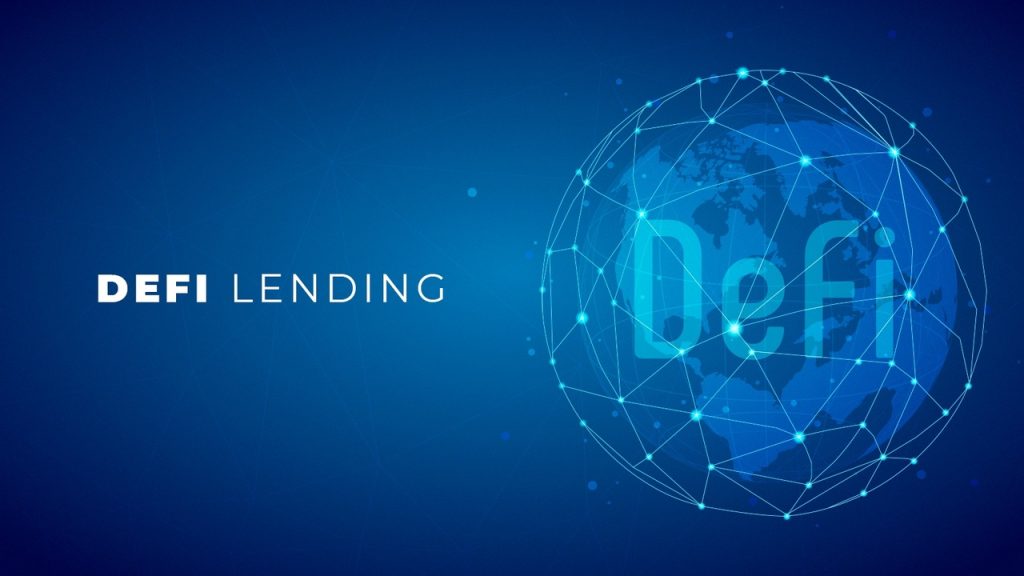In this guide, you’ll discover how DeFi lending works and get a detailed comparison of the top DeFi crypto loan platforms in 2025. Whether you’re looking to maximize earnings or borrow securely, this breakdown will give you the knowledge and tools to move confidently in the decentralized finance space.
What is a DeFi Crypto Loan?
A DeFi crypto loan is a loan issued through decentralized finance platforms without the need for a traditional bank or credit institution. It allows users to borrow funds by locking up their cryptocurrency as collateral. All transactions are managed via smart contracts on the blockchain, ensuring security, transparency, and permissionless access.
How Do DeFi Crypto Loans Work?
DeFi loans function through smart contracts—automated code-based agreements stored on blockchains. Borrowers deposit crypto assets (like ETH or USDC) into these contracts as collateral. In return, they receive another asset, often a stablecoin. Interest rates and loan terms are governed by the protocol. If the value of the collateral drops below a set threshold, the smart contract automatically liquidates it to repay the loan.
Top 5 DeFi Crypto Loan Platforms in 2025
Each DeFi lending platform has unique advantages. Here’s a detailed look at the best performers this year.
1. Aave
Aave remains one of the most innovative DeFi lending protocols. It introduced flash loans and interest rate switching and supports a wide variety of assets. In 2025, Aave has matured into a robust lending ecosystem with staking, cross-chain functionality, and its native stablecoin, GHO.
✅ Pros
- Flash loans and interest rate switching
- Staking rewards via AAVE tokens
- Interoperable with multiple blockchains
- Integrated with wallets and DeFi tools
- GHO stablecoin ecosystem
❌ Cons
- Complex for beginners
- No direct BTC support
- Variable interest rate risk
2. Compound
Compound pioneered tokenized lending positions via cTokens, helping kickstart the 2020 DeFi Summer. It remains a solid choice for Ethereum-based lending with user governance through the COMP token.
✅ Pros
- Tokenized lending positions (cTokens)
- COMP token rewards
- Earn compound interest
- Hardware wallet support
❌ Cons
- Only Ethereum-based assets
- Learning curve for beginners
- No BTC lending
3. Curve (LlamaLend)
Curve’s LlamaLend protocol launched in 2024 and offers advanced loan management via soft liquidations, making debt repayment more manageable. It’s designed for experienced DeFi users and leverages Curve’s ecosystem strength.
✅ Pros
- Boost APR with CRV token locks
- Soft liquidation mechanism
- Access to leveraged positions
- Wallet compatibility
❌ Cons
- High technical barrier
- Best rewards only for CRV stakers
- Limited asset variety
- No BTC support
4. Liquity.org
Liquity.org is a beginner-friendly DeFi lending platform that allows borrowers to set their own interest rates and offers high loan-to-value (LTV) options. However, it only supports its native stablecoin, BOLD, which has unique mechanics tied to its redemption value.
✅ Pros
- Clean, simple user interface
- High LTV ratios
- Set your own interest rate
❌ Cons
- Requires use of BOLD
- Complicated interest-pegging system
- Limited supported assets
- No BTC support
5. Save.Finance (formerly Solend)
Operating on the Solana blockchain, Save.Finance is a fast and cost-effective alternative to Ethereum-based lenders. It supports ETH via Wormhole bridging, allowing users to access a broader range of assets.
✅ Pros
- Access to ETH, USDC, and USDT
- Low gas fees (Solana-based)
- Simple user interface
❌ Cons
- Cross-chain bridge risks
- Fixed APR, no LTV control
- No native BTC lending
Best CeFi Alternative: Ledn
If DeFi is too complex or risky, Ledn offers a more traditional, centralized experience with strong security, fiat lending, and support for BTC and ETH.
Why Choose Ledn?
- Real human customer support
- Supports BTC & ETH as collateral
- Offers fiat directly
- Transparent audits and Proof of Reserves
- Unique B2X loans to double BTC exposure
✅ Pros
- User-friendly and regulated
- Receive fiat instantly
- B2X loans offer leveraged BTC exposure
- Regular financial audits
❌ Cons
- Centralized—trust in third parties is required
- Limited asset support compared to DeFi platforms
Types of DeFi Crypto Loans in 2025
Here’s a breakdown of the various DeFi loan types available this year:
Flash Loans
- No collateral required
- Must be repaid in the same transaction
- Popular for arbitrage and liquidation
Undercollateralized Loans
- Collateral value is less than borrowed amount
- Common in DAO-to-DAO or trusted borrowing systems
- Higher risk, mostly available to whitelisted addresses
Overcollateralized Loans
- Most common type
- Collateral must exceed the loan amount
- Safer and more widely accessible
Self-repaying Loans
- Uses yield from your collateral to pay interest and principal
- You eventually receive your full collateral back
Final Thoughts
DeFi lending continues to evolve in 2025, offering a range of platforms that suit everyone—from DeFi veterans using Curve’s LlamaLend to beginners exploring Liquity.org. While decentralized loans offer transparency and flexibility, centralized alternatives like Ledn may still be ideal for those seeking reliability, fiat access, and direct BTC support.
Choose the loan platform that fits your financial goals, technical comfort, and risk appetite.
Join Gen Z & Millennials New WhatsApp Channel To Stay Updated On time
https://whatsapp.com/channel/0029VaWT5gSGufImU8R0DO30


